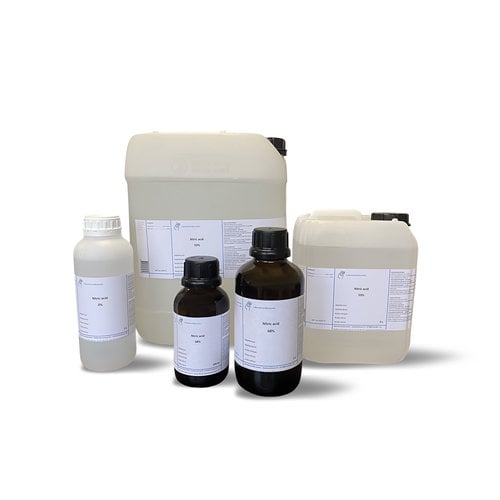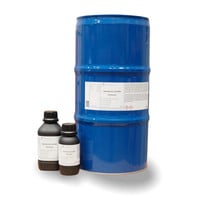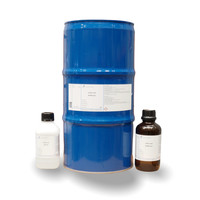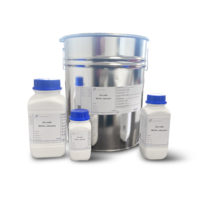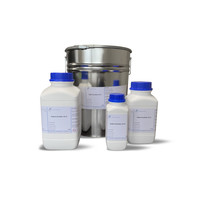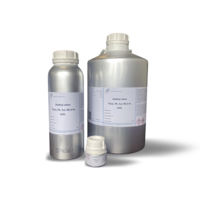You have no items in your shopping cart
Nitric acid
- Buy 2 and save 5%
Pay attention! We do not supply concentrations higher than 3% to private individuals.
NB! We do not supply concentrations higher than 3% to private individuals.
The chemical compound nitric acid (HNO3) is a corrosive liquid that can cause severe burns to living beings. It is used as a laboratory reagent, as well as to manufacture fertilizers. It has additional uses in metallurgy and refining as it reacts with most metals and in chemical synthesis. When mixed with hydrochloric acid, it forms aqua regia, a rare reagent capable of dissolving gold and platinum. Nitric acid is also a component of acid rain.
-Applications
-In the manufacture of fertilizers. Ammonium nitrosulfate is a simple nitrogen fertilizer obtained chemically from the reaction of nitric acid and sulfuric acid with ammonia.
-Nitric acid is used in the passivation process in some cases.
-Nitric acid is used in artistic engravings (etching), it is also used to check gold and platinum.
-In the electronics industry, it is used in the production of printed circuit boards (PCBs).
-In the pharmaceutical industry it is used as a separating agent for strongly basic compounds in organic media.
Empirical formula HNO3
Molar mass (M) 63,0 g/mol
Dichtheid ca. 1,12
ADR 8 II • WGK 1
CAS No.[7697-37-2]
EG-Nr. 231-714-2 • UN-Nr. 2031
What Safety Precautions Should I Take Before Using Chemicals?
It is always wise to work as safely as possible when working with chemicals. Even substances that do not seem dangerous at first can cause enormous damage if they get into your eyes. Therefore, always wear safety goggles. You also want to prevent chemicals from ending up on your skin, which is why it is important to always use good gloves or disposable gloves.
Respiratory protection is necessary for volatile substances, vaporous liquids and solids that dust. There are many different types of filters, so you should always refer to the MSDS to find out which filter you need. Many filters also specify which substances they are for.
In some cases it may be necessary to protect the whole body, in which case a plastic overall is needed, you can find it here.
When working with flammable and oxidizing substances, it is important to always have fire extinguishers and absorbents at hand. It is also useful to be able to clean up spills of aggressive chemicals immediately with absorbents and to dispose of them in accordance with international and/or local legislation.
If you need more information on how to handle a specific substance, always consult the safety data sheet. You can find this on the product page or request it via [email protected]
Downloads
$$$$$
Hazard statements
H290 May be corrosive to metals
H314 Causes severe burns and eye damage
H332 Harmful by inhalation
Precautions - prevention
P260 Do not breathe mist / vapor / spray.
P280 Wear protective gloves / protective clothing / eye protection / face protection.
Precautions - response
P303 + P361 + P353 IF ON SKIN (or hair): Immediately contaminate clothing
pull out. Rinse skin with water [or shower].
P305 + P351 + P338 IF IN EYES: Rinse cautiously with water for a long period of time
amount of minutes; remove contact lenses, if possible; keep rinsing.
P310 Immediately call a POISON CENTER / doctor.
Supplemental Hazard Information
EUH071 Corrosive to the respiratory tract




